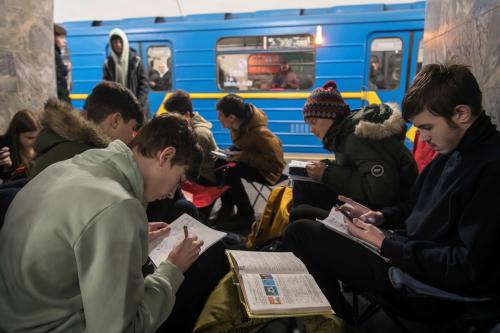A year after Prime Minister Narendra Modi was inaugurated, the bipolar alliance system in South Asia has hardened. While the alliance system remains completely informal, the United States and India have come closer to each other, and China and Pakistan have come much closer together. The current alliance structure has its origins in events dating back to 1962, but it has accelerated dramatically in the last year.
This dramatic acceleration in alliance politics in Asia was on full display on January 26 this year. On one screen, US President Barack Obama was next to Modi watching the Republic Day parade in New Delhi. It was Obama’s second visit to India, an unprecedented statement about America’s commitment to close relations with India. Modi and Obama announced a joint vision of the future. On the other screen was Pakistan’s chief of army staff (COAS), General Raheel Sharif, meeting in Beijing with Chinese leaders. These two parties announced that their alliance was all-weather, deeper than the ocean and taller than the Himalayas.
Then Chinese President Xi Jinping visited Pakistan this April with $46 billion in investment to build an economic corridor from western China to the Persian Gulf. Thus, Xinjiang and Tibet will be linked to Balochistan. The corridor will end at Gwadar, where Pakistan hopes a new city to rival Dubai will emerge as the trade entrepôt of Asia. It promises to transform Pakistan and incorporate it into a Sino sphere of influence.
The Sharifs (Pakistan Prime Minister Nawaz and COAS Raheel) promised Xi that Pakistan would create a new special division of the Pakistan army to protect Chinese workers in Pakistan. This “special security division” will total 10,000 troops and be commanded by a two-star general. Half the men will come from the Special Services Group, Pakistan’s elite commando force. It will have its own air support. In effect, this will be a Pakistani division committed exclusively to China. At the same time, Pakistan refused the pleas of one of its most reliable allies — Saudi Arabia — for troops to fight its war in Yemen. Pakistan has made its pivot to the east.
In contrast, Obama promised Washington’s backing to India for a permanent seat on the United Nations Security Council, a commitment unlikely to ever come to fruition while China has a veto. Nonetheless, it is statement heavily symbolic of the president’s worldview. It is also a commitment no future president can easily walk away from. The Joint Strategic Vision for the Asia-Pacific and Indian Ocean issued on Republic Day underscores the Modi-Obama agreement to work together in both East and South Asia. No such vision exists between Washington and Islamabad.
Obama’s tilt towards India harkens back to President John F. Kennedy. Like Kennedy, Obama too believes India is America’s natural partner in Asia (a phrase echoed by Modi in a recent Time magazine interview). Like Kennedy, Obama wants a democratic India to win the race in Asia for growth. Like Kennedy, Obama is much less entranced with Pakistan. He will be the first president since Jimmy Carter not to visit Pakistan while visiting India, and he has shaken off a Pakistan stop twice.
Pakistan’s complex relationship with terrorism, from Mumbai to Abbottabad, raises doubts in the White House about what Pakistan’s civilian leaders know about what their spies and generals are doing. Seymour Hersh’s fanciful article in the London Review of Books on the raid that killed Osama bin Laden has only reminded the White House that it was right not to trust the generals in 2011, when the CIA’s analysts tracked Osama bin Laden to the frontyard of the Pakistan Military Academy at Kakul. Far from getting help from the generals, Obama suspected they were in bed with al-Qaeda. Obama and his team are never going to go back to trusting Rawalpindi.
Kennedy came to harbour similar doubts about Pakistan when it wanted “compensation” in Kashmir to stay neutral in the Sino-Indian war in 1962. He had to weigh in heavily to keep Pakistan from opening a second front against India. Today, there is no longer a Pakistan lobby in Washington. Instead, there are many India lobbies.
Of course, India has its own bilateral ties with China. The two are not enemies, but they are also still divided by the longest disputed border in the world. Modi’s trip to China earlier this month underscored both the potential for cooperation and the lingering damage of the 1962 War. The Chinese choose to display maps of India with their territorial demands highlighted both in Kashmir and “South Tibet”. The plight of Tibet continues to cause friction today.
Beijing and Delhi are engaged in an arms race. Each is building aircraft carriers, submarines and other naval vessels to counter the other. Both have ballistic missiles capable of reaching each other’s cities. In the border region, each is furiously building roads and other infrastructure to strengthen their positions.
The emergence of an informal but tight alliance system, pitting Modi’s India with Obama’s America on one side and the Sharifs’ Pakistan with Xi’s China on the other is the culmination of a long and complex process that began in 1962, when Mao invaded India, Kennedy came to Nehru’s salvation and Ayub Khan began to court Beijing. There have been many gyrations in the process, but the destination appears to have been finally reached.
This piece was originally published by
The Indian Express
.


Commentary
Op-edOne year of Modi Government: Us versus them
May 25, 2015